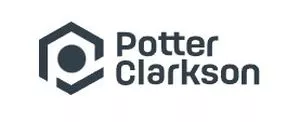From nets of environmental sensors and smart irrigation networks to AI-guided tractors and drone-mounted crop surveillance, there is something altogether digital going on down on the farm.
This marriage of traditional farming approaches such as direct observation and heavy machinery, with systemic data gathering and computational insights, is called "agri-informatics".
Whether coming from an agricultural or software background, the marriage of these disparate worlds can be challenging. In addition to adapting to the rugged and extreme conditions of the farmyard, innovators will need to adapt their IP strategy to this reality. They cannot simply rely on an approach to IP from a software, agriculture, or mechanical background. However, every challenge creates an opportunity, and those who successfully protect and secure their intellectual property in the field will find themselves in an enviable market position and an attractive prospect for investors.
PATENT PROTECTION - YOU CAN PATENT SOFTWARE!
Whether it is analysing field data to optimise pesticide application, or guiding autonomous farm machinery, software and code is a lynchpin of smart agriculture.
Contrary to rumour, software can be patented, and patenting computer-enabled technologies is one of the main ways innovators in agri-informatics can secure their position and create investable value.
To be patentable, an invention cannot fall within one of the excluded technologies (which includes "computer programs... as such") and must be new and inventive (i.e. non-obvious). The crux of this assessment often depends on whether the computer software can be seen to make a technical contribution. In the field of agritech, this is often fairly self-evident. Systems that use environmental and weather data to predict the optimal time for applying fertilisers or crop protection agents will result in increased yield. Similarly, smart water management necessarily results in cost savings and reduced eutrophication.
Indeed, as a "technical contribution" is often where the software impacts something in the real, physical world, the use-case of the system is often sufficient as a technical effect. The challenge is properly capturing this in the patent, and this is somewhere that keen legal and commercially-minded advice is critical.
TRADE SECRETS - DO YOU WANT TO PATENT SOFTWARE?
Part of the patent "bargain" is that, in exchange for a time-limited monopoly over an invention, the applicant has to publicly disclose how to put it into effect. Sadly, the right to enforce the patent does not stop people from infringing if they think they can get away with it. Often, the strength of a patent is determined in part by how easy it is to identify infringers. This can be challenging with software and especially SaaS business models, where competitor algorithms are essentially a "black box", and catching copy-cats is frustrating.
This is where trade secrets come in. By maintaining key parts of the code, tuning data, or algorithmic weightings as trade secrets, it is possible to obtain a longer - potentially indefinite - exclusivity, provided that secrecy can be maintained. This can be achieved through maintaining control over critical assets, such as by running software remotely on your server.
Trade secrets can also offer more flexibility as unlike with patents where changing or developing the model may move the model outside the scope of protection afforded by the claims, this model of IP protection might be better at adapting to these kinds of iterative developments.
The problem is that, once the secret gets out, it is out there, and will never again be confidential. Whilst there are legal remedies for theft of trade secrets or breach of confidentiality, these can only offset or compensate, but never "undo", the damage done. Innovators are advised to put in place robust trade secrets policies in order to properly audit and protect these valuable assets.
FIELD TRIALS AND TRIBULATIONS
Agri-informatics inventions require extensive field trials to gather relevant data on which future insights may be based. This may include installing sensors to monitor climatic conditions or even deploying prototype machines to gather information or test the validity of insights. Keeping your prototypes and the data they gather confidential during this process is important to prevent third-party theft of the idea, and preventing a novelty-destroying disclosure that prevents the fruits of this work from being eligible for patent protection.
However, this is challenging in agritech as farms are permeable by nature. Workers, including contractors, come and go regularly. Whilst they may be subject to a non-disclosure agreement (NDA), this cannot be used to prevent bystanders from viewing the invention. Indeed, the public at large is a significant issue for the confidentiality of field trials as many farms are publicly accessible to ramblers or viewable to road users.
UK courts have provided extensive guidance on whether trials of prototypes constitute disclosure to the public. Inventions contained within a locked enclosure, but placed in a publicly accessible place, are deemed disclosed to the public if a person skilled in the relevant art can deduce how they work. This is true regardless of whether such a person in fact saw the invention, and may be the case even if trial would be stopped in the event that third parties were spotted. However, if the observer would need to break open a device to discover how it works, this is usually enough to prevent a public disclosure.
Applying this to agritech field trials, where possible access to important elements of hardware or software should be physically restricted. Whether this is through placing sensors on private land to which access is prohibited, running software on private servers, encrypting data, or physically disguising or locking up hardware, "black box" design principles can be used to maintain confidentiality.
Where it is necessary to grant access to contractors or farm workers to perform maintenance, interpret data, or use the equipment, this should be done only on a need-to-know basis, and under an NDA.
An added advantage of this approach is that once rolled out to production models, these confidentiality measures may allow you to retain control over additional data generated through customer use, and develop new proprietary technologies.
PROTECTION FOR DEVICES
Even the most data-heavy innovations will have a physical footprint. Soil chemistry sensors, weather stations, or protective casing for off-the-shelf hardware are all vital aspects of your commercial edge.
Whilst it is important to think about the data, and how to best protect that, it would be foolish to overlook the more "public facing" part of the system. These are classic subject matter for patent protection, as well as registered designs for the aesthetic aspects of the products.
In addition to preventing third parties from competing, another important reason to consider patent protection for hardware is to ensure that you are able to take advantage of the Patent Box scheme for reducing corporation tax bills, especially when adopting a confidentiality-based approach with respect to your software innovations.
AGRI-INFORMATICS: OUR CONCLUSION
Building a holistic IP protection strategy out of overlapping rights, including software and hardware patents, database rights, copyright in software, and extensive use of trade secrets, should be a top priority for innovators in any field, including agritech. Companies that get the formula right will be able to leverage their position and build a valuable prospect for investors. Much like how agri-informatics is a marriage of hardware, software, and agricultural process knowledge, the right IP strategy will need to be interdisciplinary to provide the protection required in this area.
The content of this article is intended to provide a general guide to the subject matter. Specialist advice should be sought about your specific circumstances.


